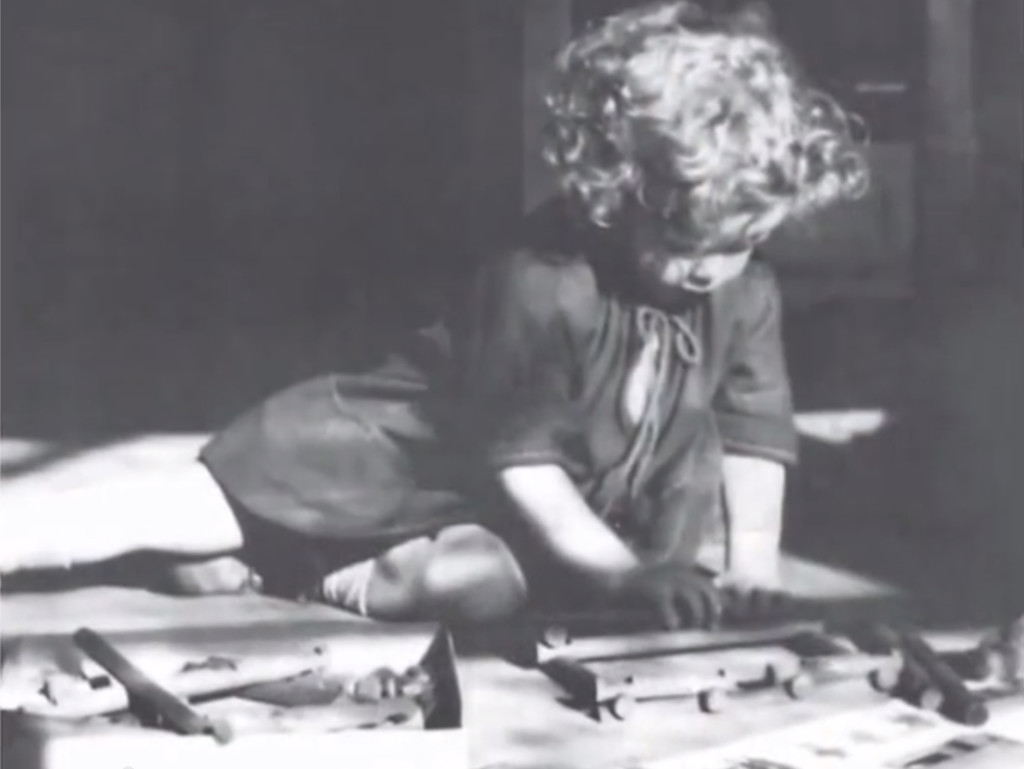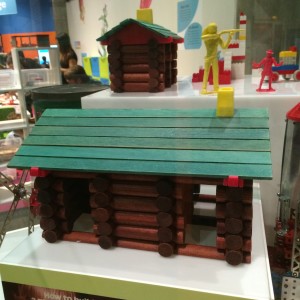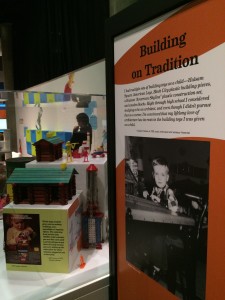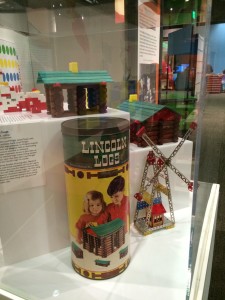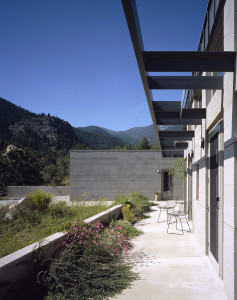Story
From Lincoln Logs to Blueprints
Becoming an architect is a rather daunting task when your father is Frank Lloyd Wright. Although John Lloyd Wright had a hard time measuring up to the architectural achievements of his father, he was able to define his own place in history with the invention of Lincoln Logs in 1918. He found inspiration for the toy on a 1917 visit to Japan, where he assisted his father with the construction of the Imperial Hotel using a revolutionary technique of interlocking beams. The inherent simplicity of the design struck a chord with John, and soon after, he set out to democratize the technique for the enjoyment of America’s children.
Capitalizing on the American zeitgeist, John encased the beloved toys in boxes that promised “Interesting playthings typifying ‘the spirit of America.’” At the time, patriotism was abloom, a reaction to the rapid industrialization and urbanization threatening to break the nation’s ties to its modest roots. A simple log cabin just like the one that bore our great president Abraham Lincoln was exactly the sort of symbol modern American children needed.
Not only was Lincoln a respected American icon worthy of children’s idolization, but he also stood on the cusp of an era, straddling the transition between preindustrial and industrial America. The log cabin harks back to a mythic, preindustrial America when the West was still a frontier brimming with unknown opportunities. It was the breeding ground for American dreams and self-made men, and its spirit could be perfectly embodied in a boy born in a humble log cabin who grew up to assume the highest office in the United States.
John Lloyd Wright’s toy allowed the next generation of children to live out this same Lincolnian dream. One such child who grew up building dreams on this scale was John’s own daughter, Elizabeth Wright Ingraham. As a child, Elizabeth most likely executed her first architectural projects with Lincoln Logs. Her father not only provided her with this simple building toy but also equipped her with the building blocks required for a future career in architecture. Elizabeth adopted George Bernard Shaw’s philosophy on community engagement and observed these ideas in action with her father, who she claimed “did what architects should be doing: participating in the community.”
Elizabeth also learned a thing or two from her grandfather, Frank Lloyd Wright, studying at his architectural school. Here she met her husband and fellow architect, Gordon Ingraham. Once married, the couple traveled 11,000 miles before deciding to settle out west in Colorado Springs. In the same spirit of her father’s toy, Elizabeth recognized the West as a land of opportunity. According to historic preservationist Elaine Freed, Elizabeth “felt freedom in the west that was very important to her.”
The freedom to create and structure her own world was an understandable desire for a woman in a male-dominated profession, and Elizabeth was endowed with an unmistakable vitality and drive that allowed her to push forward in the field. She contributed beautiful work to the architectural landscape of the Pikes Peak region, including homes such as Solaz and La Casa, which she elegantly integrated into their natural surroundings. This environmental priority in her work was crucial to Elizabeth, inspiring her to found the Wright-Ingraham Institute in 1970 to foster “the conservation, preservation, and wise use of human and natural resources.”
Over the course of her career, Elizabeth designed 150 buildings in Colorado, pouring her passion into each one, but public buildings intended for the community always held a special place in her heart. In an interview with the American Institute of Architects, she said, “The architects, in my book, have all the necessary ingredients for being major contributors to society.” Elizabeth undoubtedly fulfilled this duty. Driven by her passion for ideas, she loved designing libraries because she respected their importance as arbiters of free knowledge to society.
Additionally, she co-founded the Women’s Forum of Colorado, an organization whose purpose is “to foster the exchange of ideas and experiences and support the personal enrichment and professional development of [Colorado] women.”
This mission certainly spoke to Elizabeth’s personal desire to give back and inspire positive change in society, and the organization continues to uphold this same mission today.
It would appear that much like her father, Elizabeth Wright Ingraham was dedicated to instilling the next generation with the same spirit of hope and opportunity that she acquired at an early age. From a young girl playing with Lincoln Logs to a prominent architect making significant contributions, Elizabeth proved that a simple start can lead to something great.

